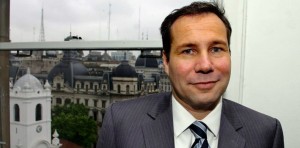EspañolWas it mere coincidence that half of those present in the apartment of Argentinean prosecutor Alberto Nisman the day his body was found weren’t wearing gloves? Was it simple negligence when a forensics officer cleaned the blood-soaked pistol found next to his body with toilet paper from the bathroom?
This is what journalists on the Periodismo Para Todos (PPT; Journalism for everyone) TV show asked the Argentinean public on Sunday, May 31, when they aired a video filmed by federal police in the apartment where Nisman lived just hours after his death.

Alberto Nisman was found dead in his bathroom in January 2015, just days after accusing President Cristina Kirchner of covering up Iran’s alleged role in the 1994 bombing of the AMIA Jewish center in Buenos Aires.
The four-hour video, according to the PPT journalists, shows how investigators arrived on the scene at 2 a.m. on Monday, January 19, and proceeded to commit multiple serious breaches of forensic investigation procedure.
To begin with, explains PPT presenter Jorge Lanata, the number of people present in the apartment was like “Tokyo at two in the afternoon.”
¡Limpiaron la pistola! ¡Borraron las huellas! #ElVideoDeNisman
— Cristina Perez LAVÁ BIEN TUS MANOS (@Cris_noticias) June 1, 2015
“They cleaned the pistol! They wiped the prints!”
Police proceeded to handle objects within the prosecutor’s strongbox without latex gloves, which they also neglected to wear when taking fingerprints from one of the doors. Moreover, the video shows that forensic investigators failed to take several items for analysis, including clearly visible samples of hair.
One of the most contentious mistakes centers around the pistol that was apparently used to kill Nisman. The investigator who picks up the weapon decides to clean it with toilet paper — from the very bathroom where Nisman’s body is lying — so the person filming can record its model and serial number.
Also calling the attention of the PPT analysts was the fact that the video featured cuts and clear signs of editing. Normally, they explained, these kind of videos should be filmed without any subsequent alteration.
In another blunder, overseeing prosecutor Viviana Fein can be seen to tread on the blood in the bathroom.
En las democracias verdaderas los fiscales no mueren después de denunciar a la Presidenta. #ElVideoDeNisman
— Agustín Laje (@AgustinLaje) June 1, 2015
“In genuine democracies, prosecutors don’t die after bringing evidence against the president.”
State Security Secretary Sergio Berni, one of the first to arrive at the presumed crime scene, asks the prosecutor – some time after she has arrived – if she can verify whether Nisman is dying.
https://twitter.com/Lanataenel13/status/605193857119203328
“They cleaned the weapon with toilet paper.”
Fein subsequently defended the procedure, saying that “the examination by the forensic medical corps was excellent.” She added that investigating officers carried out all appropriate tests.
With regard to the use of toilet paper on what may have been a murder weapon, the prosecutor told FM radio station Vorterix that “the police officer didn’t pass the toilet paper over the whole weapon, only where he knew the caliber and numbering were.”
The Iranian Connection
In another segment of the program, Lenata explores the alleged connection between Iran, Venezuela, Argentina, and Nisman, suggesting that the nuclear program of former Iranian President Mahmoud Ahamadinejad involved the collaboration of Kirchner and Venezuela’s Hugo Chávez.
“The Nisman issue hides something much more important, which is a parallel relationship between Argentina and Iran, with regard to the nuclear issue,” Lenata argues.
Security analyst Douglas Farah meanwhile told the show that Washington’s perspective is that Nisman “wouldn’t be dead were it not for his investigation.”
PPT journalist Mariel Fitzpatrick adds that “all of the sources that we consulted in the United States confirmed that the true motive of Iranian influence in the region wasn’t to boost trade, but to develop its nuclear program.” According to the program, Nisman had uncovered key evidence about Tehran’s clandestine objectives.
Joseph Humire, a former US marine and executive director of the Center for a Free Security, similarly told PPT that Nisman possessed ample information about how fundamentalist terrorism operates in Latin America.
“There was an alliance with the terrorists. The executive made an alliance with the terrorists,” Nisman told an Argentinean television program days before he died.
For Humire, Nisman understood the Iranian connection better than any Latin-American official, and raised the alarm with the United States and his regional colleagues. “He had evidence of how Iran was operating and its growing presence in the region,” Humire argued.
The analyst suggested that Ahmadinejad made a special request of Chávez, to broker access to Argentina’s nuclear power technology. Argentina developed a vigorous nuclear program during the 1970s and 80s, a program which tailed off at the end of the century.
According to this theory, Iran used Venezuela as an entry point to Latin America as a means of going under the radar of stringent international sanctions, designed to prevent Tehran from acquiring nuclear weapons materiel.
As Argentina returned to developing its nuclear program anew in 2009 and 2010, Humire adds, Iran began to woo Buenos Aires once more. Iran thus began to funnel money to Argentina via Venezuela.
“The failure of laws and institutions in Argentina and its corrupt politics allowed Iran to operate with impunity in the country,” Humire concluded.
 Versión Español
Versión Español












